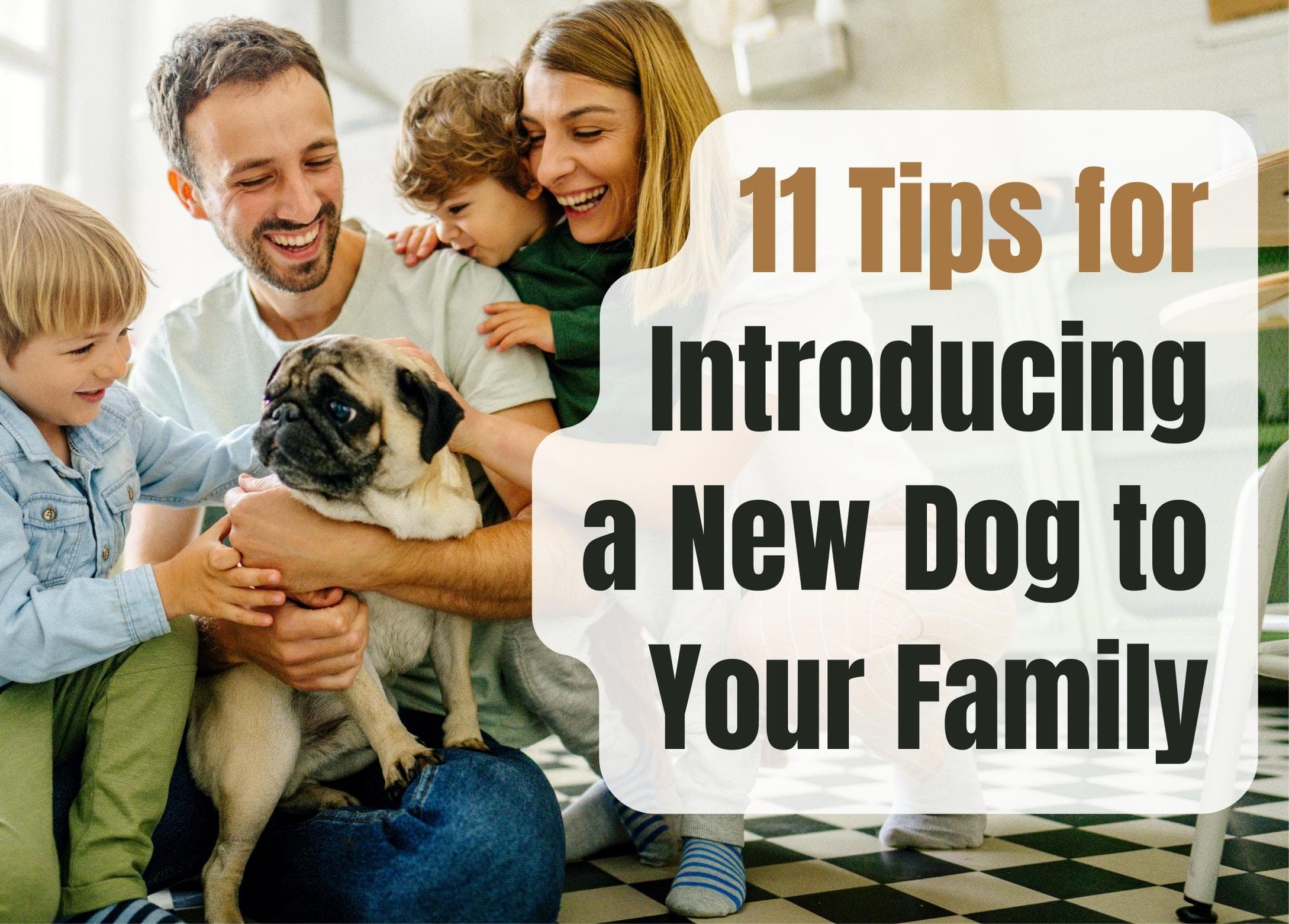How to Introduce a New Dog to Your Family: 11 Helpful Tips

Bringing a new puppy home is exciting — but let’s be honest, it can also be a bit chaotic. You’ve got routines changing, pets adjusting, and a tiny ball of energy learning the ropes. We’ve been there, and we know the early days make a lasting impact. So here’s what’s helped us (and other pet parents we’ve worked with) make that transition smoother for everyone involved.
Start with the Right Match
Before picking out a puppy, take a real look at your lifestyle. If you’re gone most of the day, a high-energy or highly social breed might struggle. If you have small kids or older family members, it’s important to choose a dog that’s gentle and adaptable. And if you already have pets, think about how a new pup will fit into that dynamic — not every dog is thrilled to share their space.
Go Slow with Introductions
When you bring your new dog home, take things slow. Let them meet family members one at a time instead of overwhelming them with a big group. Sniffing is totally normal — it’s how dogs get to know people. So let your pup take the lead.
If you have another dog, introduce them in a neutral space like a park. Walk them near each other (but not too close at first), and reward calm behavior. Watch their body language. Tension? Distraction works better than correction — redirect with a treat or training cue.
For cats, it’s all about letting them move at their own pace. No forced interactions. Let the cat decide when they’re ready, and always give them a safe escape route.
Set Up a Safe Space
Before your puppy even steps paw inside, have a space ready just for them. A crate lined with soft blankets and a few toys can be a comforting little haven. Give them a quiet area to eat, sleep, and decompress — especially helpful if you have other pets.
Also, puppy-proof your home: remove choking hazards, block off stairs with baby gates, put rugs on slippery floors, and keep valuables (and food!) out of reach. Trust us, curious puppies find everything.
Avoid Competition and Conflict
During the early days, it’s better to feed pets separately and keep high-value items like toys and treats out of shared spaces. Even the most easygoing dogs can get territorial. Watch for signs of resource guarding, and intervene gently if needed.
Keep Everyone Engaged
Balance is key. Spend individual time with your new dog and your current pets so no one feels left out. Then do group activities — short walks, playtime, basic training — to build positive associations.
We’ve found that shared experiences really help dogs bond. If they’re sniffing the same tree or working on the same training cue, they’re learning to trust each other.
Help Them Adjust — Patiently
Don’t worry if your pup doesn’t warm up right away. It can take days or even weeks for them to settle in and start showing their personality. Be consistent, kind, and patient. Positive reinforcement works wonders — treats, praise, and play make a big difference.
And remember: never punish your dog for being scared or unsure. That only makes things harder in the long run.
Visit the Vet Early
Before your pup hangs out with other pets, make sure they’ve had a checkup, vaccinations, and deworming. It’s not just about their health — you’re protecting your whole household.
Train and Socialize from Day One
Training isn’t just about commands — it builds communication and trust. Start with basics like sit, stay, and crate training. Keep sessions short and fun, and always end on a positive note.
Socialization is just as important. Expose your pup to different people, sounds, and situations in a controlled way, and reward calm behavior. This helps them grow into a confident, well-adjusted dog.
Keep Safety First
Whether it’s dog-to-dog intros or baby-and-pup moments, always supervise interactions. Keep initial meetings short, and don’t force anything. If things start getting tense, separate and try again later.
And never leave young kids alone with a new dog. Teach them to be gentle and respectful — your dog will thank you.
Bringing home a new puppy is a big change, but it’s also the start of something beautiful. A little prep, a lot of patience, and some good old-fashioned love go a long way. Before you know it, your new pup will feel like they’ve always been part of the family.
